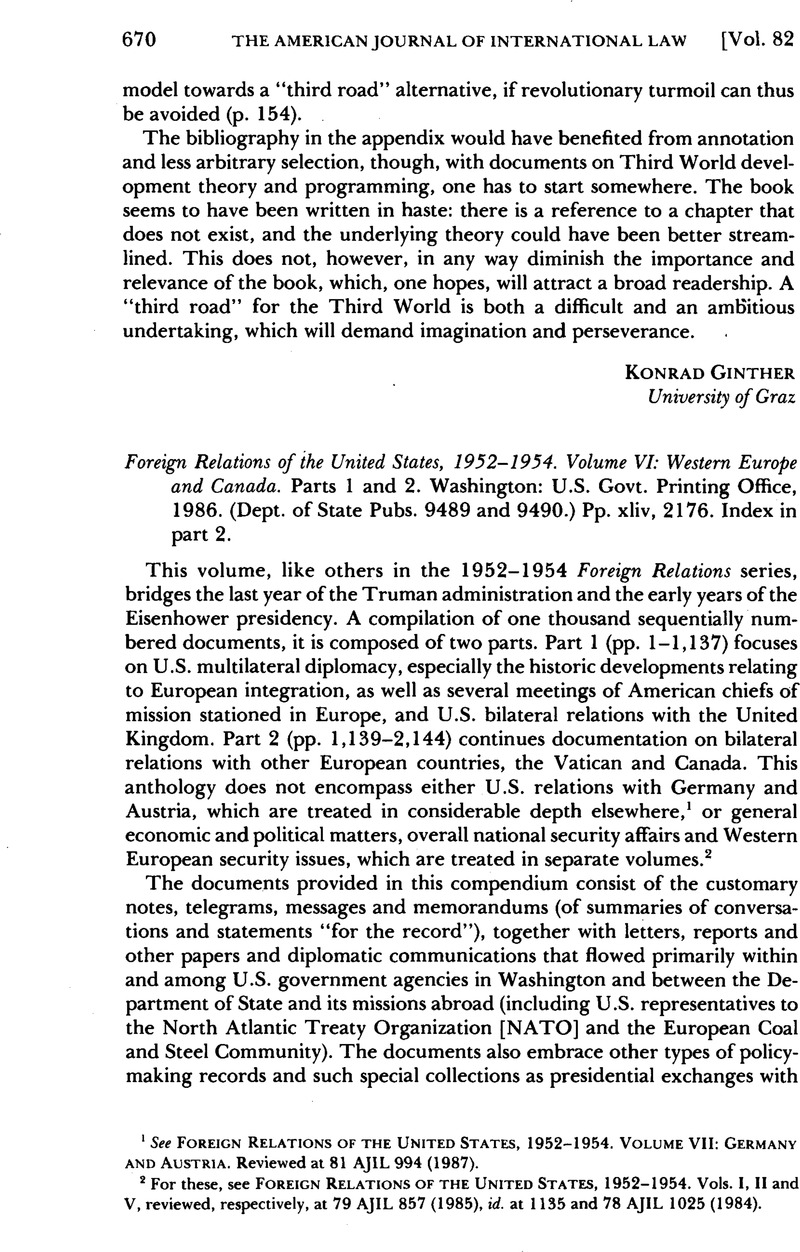No CrossRef data available.
Article contents
Foreign Relations of the United States, 1952-1954. Volume VI: Western Europe and Canada. Parts 1 and 2. Washington: U.S. Govt. Printing Office, 1986 (Dept, of State Pubs. 9489 and 9490.) Pp. xliv 2176. Index in part 2.
Published online by Cambridge University Press: 27 February 2017
Abstract

- Type
- Book Reviews and Notes
- Information
- Copyright
- Copyright © American Society of International Law 1988
References
1 See Foreign Relations of the United States, 1952–1954. Volume VII: Germany and Austria. Reviewed at 81 AJIL 994 (1987).
2 For these, see Foreign Relations of the United States, 1952–1954. Vols. I, II and V, reviewed, respectively, at 79 AJIL 857 (1985), id. at 1135 and 78 AJIL 1025 (1984).
3 The first phase involved the establishment of the Council of Europe, the Brussels Pact, the Organization for European Economic Cooperation and the European Coal and Steel Community—foreshadowing the attempt to integrate the “Community of Six.” A later stage was characterized by the birth of the European Economic Community (EEC) and the European Atomic Energy Community (EURATOM).
4 The 1941 agreement remained unapproved by Congress for more than a decade. President Eisenhower and Queen Elizabeth II participated in dedicating the St. Lawrence Seaway, at Montreal, in June 1959.
5 For commentary on this matter, see review of Foreign Relations of the United States, 1951. Volume IV: Europe: Political and Economic Developments, 80 AJIL 772, especially at 774 (1986).
6 A practical temporary solution to the matter was worked out by means of unilateral representation in Washington by the Vatican’s Apostolic Delegate. Eventually, formal diplomatic relations were regularized in 1984. Also, in addition to Woodrow Wilson’s audience with the Pope in 1919, every President, beginning with Eisenhower, has had one or more such audiences during summit trips to Europe.




